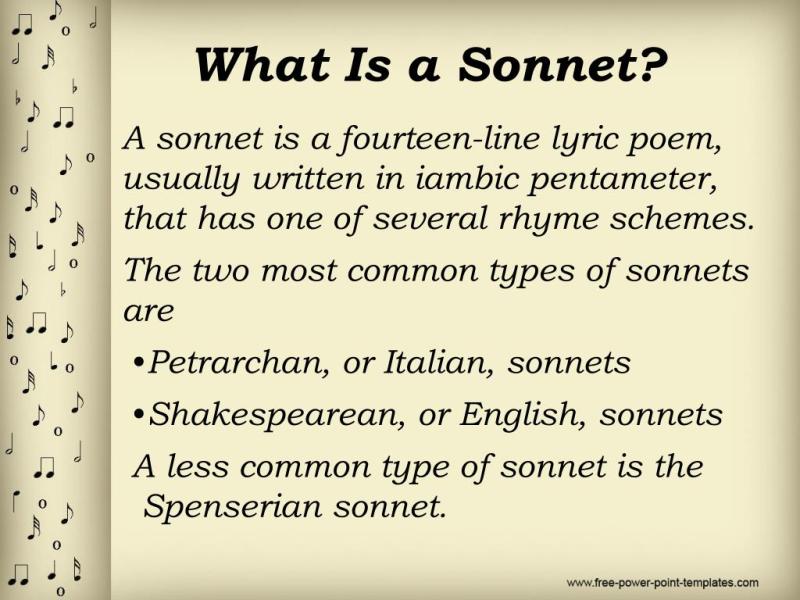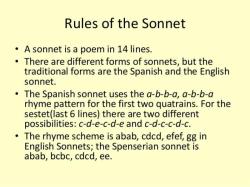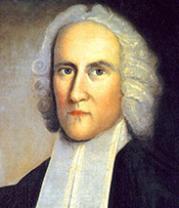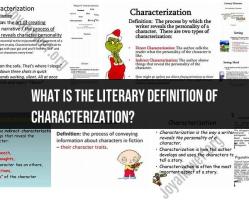Are sonnets the same thing as poems?
Sonnets are a specific form of poems, but not all poems are sonnets. A sonnet is a poetic form that follows a specific structure, typically consisting of 14 lines with a specific rhyme scheme and meter. The word "sonnet" comes from the Italian word "sonetto," meaning "little song" or "little sound."
The most well-known and widely used form of the sonnet is the Shakespearean or Elizabethan sonnet, which consists of three quatrains (four-line stanzas) followed by a final rhymed couplet (two-line stanza). The rhyme scheme is usually ABABCDCDEFEFGG. Another common form is the Petrarchan or Italian sonnet, which typically consists of an octave (eight-line stanza) followed by a sestet (six-line stanza) with various rhyme schemes.
On the other hand, the term "poem" is a broader category that encompasses a wide range of literary works. Poems can take various forms, structures, and styles. They may include free verse, rhymed or unrhymed stanzas, and various meters. Poems can be short or long, narrative or lyric, and they often explore a diverse range of themes and emotions.
In summary, sonnets are a specific type of poem characterized by their distinctive structure, while poems, in general, encompass a broader array of literary expressions. Sonnets are a unique and structured subset of the larger category of poetry.
Demystifying sonnets: Exploring the distinctions between sonnets and poems
Sonnets are a specific type of poem with a strict structure and rhyme scheme. Traditional sonnets consist of 14 lines in iambic pentameter (a meter consisting of five pairs of syllables, with each pair consisting of an unstressed syllable followed by a stressed syllable). Sonnets can be further divided into two main types: Shakespearean sonnets and Petrarchan sonnets.
Shakespearean sonnets are characterized by their three quatrains (four-line stanzas) and a final couplet (two-line stanza). The quatrains typically introduce the problem or situation, develop the argument or theme, and turn the argument or theme in a new direction. The couplet provides a resolution or conclusion to the poem.
Petrarchan sonnets are characterized by their octave (eight-line stanza) and sestet (six-line stanza). The octave typically introduces the problem or situation and develops the argument or theme. The sestet provides a turn or resolution to the poem.
Differences Between Sonnets and Traditional Poems
The main difference between sonnets and traditional poems is their strict structure. Sonnets have a fixed number of lines and a specific rhyme scheme, while traditional poems do not. Additionally, sonnets often follow a specific thematic structure, such as the Shakespearean sonnet's three quatrains and a couplet, or the Petrarchan sonnet's octave and sestet.
Analysis of Structure and Themes in Sonnets Versus Traditional Poems
The strict structure of sonnets can be both challenging and rewarding for poets. On the one hand, the structure can limit the poet's creative freedom. On the other hand, the structure can provide a framework for the poet to explore complex themes and ideas in a concise and focused way.
Sonnets are often used to explore universal themes such as love, loss, beauty, and mortality. The strict structure of the sonnet can help poets to develop these themes in a thoughtful and nuanced way.
Examples of famous sonnets and their impact on poetry
Some of the most famous sonnets in the English language include:
- "Sonnet 18" by William Shakespeare ("Shall I compare thee to a summer's day?")
- "How do I love thee? Let me count the ways" by Elizabeth Barrett Browning
- "On First Looking into Chapman's Homer" by John Keats
- "When I Have Fears That I May Cease to Be" by John Keats
- "Net to Me" by Edna St. Vincent Millay
These sonnets have had a profound impact on poetry, inspiring subsequent poets to explore the sonnet form and its potential for expressing complex emotions and ideas.
Conclusion
Sonnets are a unique and enduring form of poetry. Their strict structure and rhyme scheme can be challenging, but they also provide a framework for poets to explore complex themes in a concise and focused way. Some of the most famous sonnets in the English language have had a profound impact on poetry, inspiring subsequent poets to explore the sonnet form and its potential for expressing complex emotions and ideas.











